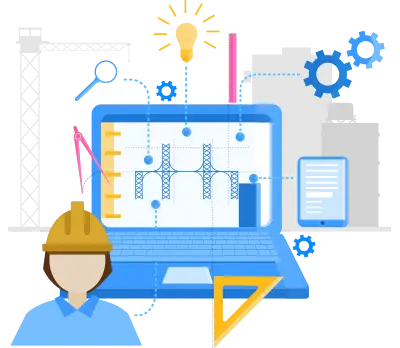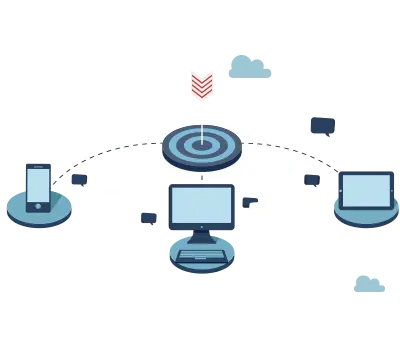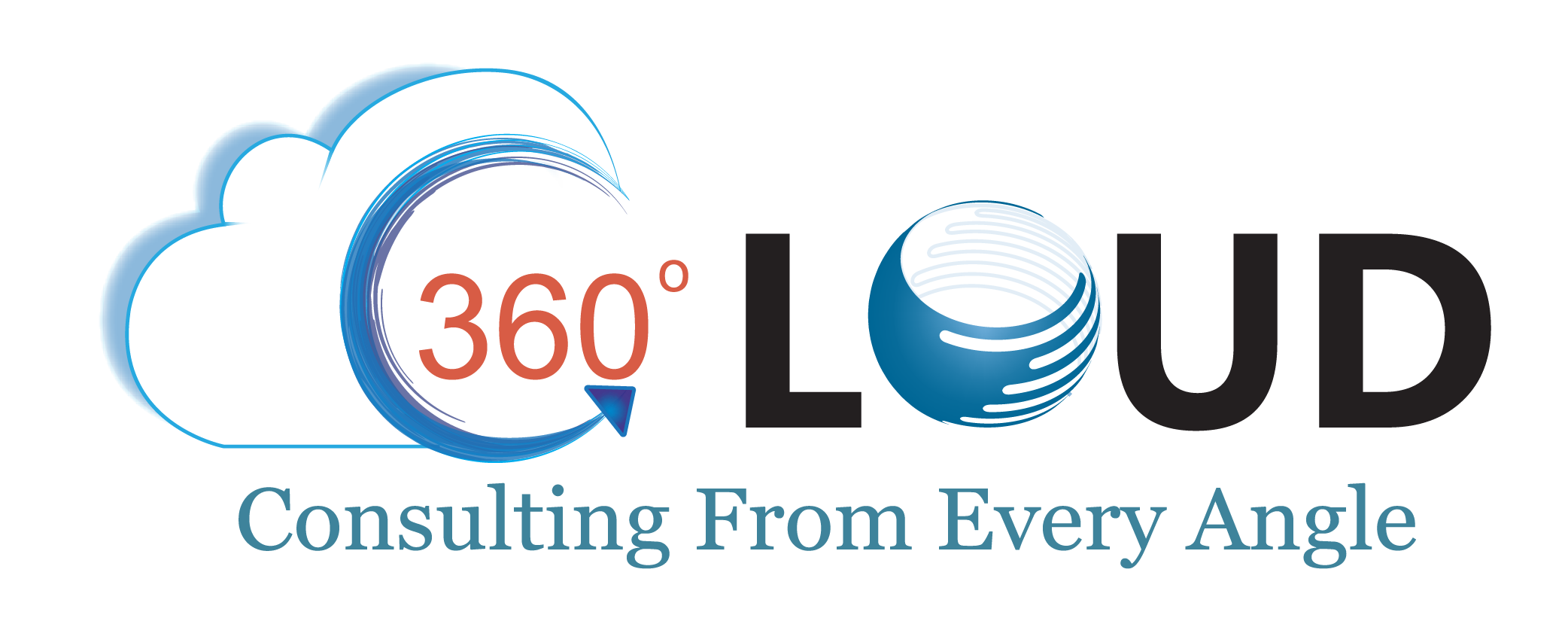How a Salesforce Technical Architect Ensures Your Org Grows Without Breaking
25 Nov 2025
Table of Contents

Whether it’s a new organization or small department, Salesforce has proved to be a powerful engine everywhere. It enables teams to spin up new objects, create a simple Flow, and generate reports within hours. When everything goes smoothly, organizations end up believing that the Salesforce can handle everything. However, as the organization grows and data keeps increasing and businesses become more interconnected, the platform often begins to crack leading to slow performance or system failure. This is where the Salesforce Technical Architect (TA) becomes the most critical hire.
The TA serves as the essential “bridge” between high-level business goals and the detailed, scalable system design required to get there. They provide the strategic foresight needed to design solutions that don’t just work today, but that can gracefully handle the complexity, volume, and evolution of tomorrow’s enterprise.
Table of Contents
What Is a Salesforce Technical Architect?
The Technical Architect (TA) is the highest echelon of technical expertise within the Salesforce ecosystem. They are not simply developers who write complex code; they are strategic problem-solvers who design the entire technical blueprint of an organization’s Salesforce implementation. The TA’s primary role is to ensure the platform is scalable, maintainable, secure, and performant for the next 5-10 years, aligning every design decision with the organization’s long-term enterprise strategy. They govern development standards, manage large data volumes (LDV), oversee complex integrations, and mitigate technical risk.
While a Solution Architect defines the solution to the business problem (e.g., “We will use Experience Cloud for our customer portal”), the Salesforce Technical Architect defines the solution on the platform (e.g., “We will integrate Experience Cloud data via platform events, using Named Credentials for authentication, and we will archive community data to Big Objects annually to maintain performance”).
Their Impact on Growth Planning
The Technical Architect is indispensable for growth planning because they introduce discipline and foresight. Without a TA, growth efforts often focus on quick, tactical wins (a new trigger here, a new Flow there). The TA prevents this fragmentation by creating a comprehensive Salesforce enterprise architecture blueprint.
In practice, a TA’s influence ensures that when the organization needs to onboard a new business unit, integrate with a new ERP system, or handle a tenfold increase in data volume, the Salesforce platform is structurally ready. They design the system not for the data you have today, but for the load you will have in five years, ensuring that your organization can scale without breaking—protecting your initial investment and enabling smooth, reliable business expansion.
See how a major enterprise solved $5M in technical debt with a single TA.

The Real Problems Organizations Face Without an Architect
When an organization relies solely on day-to-day configuration and ad-hoc development without architectural oversight, the Salesforce system slowly turns into a technical liability. The consequences are felt not just in the IT department, but across sales, service, and executive reporting. These are the chronic headaches that signal the absence of an architect:
1. Slow System Performance
The most common symptom is speed degradation. The system starts to feel sluggish, load times creep up, and users spend unnecessary seconds waiting for screens to render. Why? Because without a Salesforce technical architect designing for Large Data Volumes (LDV), every query touches too many records, and poorly indexed data struggles under the load. That frustrating delay your sales team experiences is directly related to a lack of architectural planning around data structure and performance optimization.
2. Data Duplication & Corruption
In the absence of clear data governance rules, every user and system integration starts pushing data without standardization. This results in data duplication (three different records for the same customer) and corruption (inconsistent field values). The sales team works on old data, marketing sends emails to the wrong addresses, and trust in the system erodes. A TA sets up the ironclad rules for data integrity from the start, preventing this mess.
3. Conflicting Automations
The phrase “too many cooks” is quite applicable here. When different developers and admins create Apex Triggers, Flow, and Process Builders separately, there comes a time when they end up stepping on each other’s toes. This will end up in conflicting automations that can fail unexpectedly and might overwrite values. Debugging in such cases can be very challenging, taking up days of fixing.
4. Integration Failures
Salesforce need not to be in a vacuum. Its true value can be seen when it is connected to other systems. Without a Salesforce technical architect, these integrations could be very brittle and might break down at any point in time. The cost of fixing these integration issues can be way too much, and it can also end up disturbing the entire project timeline.
5. Reporting Inconsistencies
If your data structure is messy, it would end up in meaningless reports. Such reports are a waste as sales and service teams cannot rely on those inaccurate case metrics as it would just lead to flawed and inappropriate business decisions.
Get your architecture blueprint right the first time.

6. No DevOps or Release Management
Without a Technical Architect establishing development standards, teams fall into a pattern of deploying changes manually directly into production (the “Wild West” approach). This leads to zero accountability, frequent production outages, and hard-to-maintain customizations that are undocumented and unversioned. The TA forces the adoption of a structured DevOps and release management framework, turning risky deployments into predictable events.
7. Constant Firefighting vs. Planned Innovation
In an organization without an architect, the IT team spends 80% of its time “firefighting”—reacting to system failures, patching conflicting automations, and fixing broken reports. There is no time left for planned innovation. The TA stops the firefighting by fixing the structural flaws, allowing the development team to finally focus on strategic projects that actually generate business value.
How a Salesforce Technical Architect Ensure Your Org Scales Smoothly
A Salesforce Technical Architect is a proactive shield against system failure. Their work is fundamentally preventative, setting up the guardrails, standards, and strategic blueprints that allow your organization to grow exponentially without incurring crippling technical debt or performance bottlenecks.
1. Creating a Long-Term System Architecture Blueprint
The TA’s first priority is to stop tactical, reactive building. They design a comprehensive, long-term blueprint for your entire Salesforce ecosystem. This involves intricate data modeling (defining optimal object relationships and schema structure), meticulously planning for feature adoption, and establishing a robust Salesforce governance framework. This blueprint ensures every new piece of functionality is built where it belongs, preventing future conflicts and ensuring the platform is ready for the next decade of business requirements.
2. Ensuring Automation Governance
The TA establishes the rules of the road for automation. They eliminate the “spaghetti logic” that causes production errors by enforcing a single, unified automation standard. This means eliminating process overlap and establishing a clear Flow orchestration strategy where every piece of automation has a defined purpose and execution order. By choosing the right automation tools (Flow vs. Apex) for the right job, the TA maximizes performance and drastically reduces debugging time.
3. Designing Scalable Integrations
Brittle, point-to-point connections are the enemy of growth. The TA protects the organization by designing a resilient, secure integration layer. They enforce API-first design, leveraging middleware or sophisticated Salesforce-native tools to act as a secure buffer between systems. This prevents any single system change (e.g., updating your ERP) from causing cascading failures in your Salesforce org. This strategic approach avoids costly, time-consuming integration failures in the long run.
4. Establishing Data Governance & Data Quality Strategy
Data quality is the cornerstone of business intelligence. The Salesforce technical architect defines and enforces strict organizational standards, including universal naming conventions, rigorous validation rules, and comprehensive metadata standards. Crucially, they design and implement a comprehensive security model, managing field-level and record-level security across profiles, roles, and sharing sets, ensuring sensitive data is protected while users retain access to the information they need to do their jobs.
5. Enabling DevOps, Testing, and Release Strategy
Growth requires predictability. The TA moves the team away from manual, risky deployments and into a structured, mature DevOps framework. This involves establishing CI/CD pipelines, mandating version control (Git), and defining a clear environment strategy (Dev, QA, UAT, Production). By institutionalizing rigorous testing before any release, the TA ensures that innovation can be deployed rapidly and safely, minimizing production downtime.
6. Future Proofing for AI, Multi-Cloud, and New Salesforce Releases
The Technical Architect is focused on what’s next. They ensure the platform is AI ready by establishing the necessary data integrity and automation maturity required to leverage predictive insights (like Einstein). They constantly monitor the Salesforce roadmap and architect the platform to seamlessly adapt to new features and major platform upgrades. This forward-looking approach ensures the business can adopt new multi-cloud capabilities (like Marketing Cloud or Commerce Cloud) without requiring a costly, disruptive architectural overhaul.
Cost vs ROI: Why a Salesforce Technical Architect Saves Money
The salary of a Salesforce Technical Architect (TA) is often viewed as a significant expense. However, this is a flawed perspective. A TA is not an expense, but a critical insurance policy and an investment multiplier. They are the highest form of risk mitigation you can purchase, ensuring that every dollar spent on licenses, developers, and consultants generates maximum return and long-term viability. The money a TA saves through prevention far outweighs their compensation.
Prevents Costly Rework and Project Failure
Firms that don’t have a TA often end up designing solutions reactively. So, chances are, some of the features might end up breaking down after six months of going live. This is because as soon as any major update comes, the features won’t be scalable enough to work and would get stuck. This would just end up in the costly rework of the team. That’s where a TA is essential as the expert would begin with an architectural blueprint to ensure setting up a solid foundation of the solution.
Reduces Support Tickets and Firefighting
Any system that is poorly architected is highly likely to be fragile. Any agent encountering issues like inconsistency in data, slow screen load, or any other error would simply lead to forming a support ticket, ending up in developer doing the fixing again and again. A technical architect would help in setting up automation governance along with robust data governance, making the system solid. This will lead to a few future tickets and a smooth working system.
Speeds Up Release Cycles and Time-to-Market
Having clear and robust architectural standards would help developers to build a solution with confidence. A TA helps maintain this confidence by enabling faster release cycles, ensuring that the system won’t break down as soon as any new feature comes up. This will enable boosting time-to-market for businesses, while maintaining less technical debt.
Find out if your current system is ready for the multi-cloud future.

Ensures Adoption and Performance Stability
If a team is using a slow Salesforce instance, chances are that the staff will move back to the previous system, thus decreasing the user adoption. This will simply make the entire Salesforce investment useless. A technical architect makes sure that the Salesforce solution has performance stability and reliability, helping boost user trust. When a system is user-friendly, reliable, and fast, it is highly likely for the team to use it, thus maximizing the ROI.
Hire a Salesforce Technical Architect: Scale With Confidence, Not Chaos
Salesforce is built to grow with your business — but only if the foundation is architected correctly. Without Salesforce governance, scalable automation, integration strategy, and org-wide Salesforce enterprise architecture planning, growth becomes expensive, unpredictable, and technically risky.
A Salesforce Technical Architect ensures that every workflow, integration, and configuration supports the long-term vision — not just today’s urgency. From preventing technical debt to enabling AI readiness and efficient DevOps pipelines, they play a pivotal role in making Salesforce a strategic asset instead of a maintenance burden.
If your business is planning major expansion, adopting multiple Salesforce clouds, or simply struggling with system complexity, now is the right time to involve a Technical Architect — before issues become irreversible.
Learn about the technical standards our TAs enforce to maximize performance.

FAQs
At what stage should a company bring in a Salesforce Technical Architect?
A company should bring in a Technical Architect (TA) whenever they move beyond basic, out-of-the-box functionality and face increasing complexity that goes beyond the capacity of a standard administrator. The critical triggers for engaging a TA include significant system scaling, such as when the user count grows beyond 50-75 active users, or when the company is planning major integrations with core external systems like ERP, finance, or external marketing platforms. Further triggers involve multi-cloud adoption, which requires integrating platforms like Sales Cloud, Service Cloud, and Marketing Cloud, and any instance of recurring performance issues, such as slowdowns, timeouts, or difficult-to-diagnose errors.
What’s the difference between a developer and a technical architect?
The difference between a Developer and a Technical Architect is rooted in scope and time horizon. A Developer’s focus is primarily tactical and short-term; they are responsible for executing the technical specifications by writing high-quality code in Apex, Flows, and LWC components. In contrast, a Technical Architect’s focus is strategic and long-term, as they define how the entire system should be built and how it will evolve over years. The TA designs the overarching data model, establishes the governance framework, validates security models, and dictates complex integration patterns. They ensure the platform is robust enough to handle current and future growth, effectively setting the guardrails within which the Developer then builds the specific features.
Can a Salesforce Admin replace a Technical Architect?
No, a Salesforce Administrator cannot replace a Technical Architect (TA) due to the fundamental difference in their scopes of expertise. An Admin's role is centered on day-to-day configuration, user support, and declarative changes, meaning they work entirely within the established architecture. A TA, conversely, is responsible for designing that architecture, specializing in high-level data modeling, overall system governance, complex security strategy, and large-scale performance optimization—skills that are not part of an Admin’s typical duties. Relying solely on an Admin for critical architectural decisions is a common organizational mistake that inevitably leads to mounting technical debt and scalability barriers.
How does a Technical Architect reduce technical debt?
A Technical Architect is vital for reducing technical debt because they address the systemic root causes of complexity and fragility rather than just treating symptoms. They achieve this by establishing robust Automation Governance, which involves eliminating conflicting or redundant automations (like multiple Flows or Triggers performing the same task) and enforcing a unified execution framework. Furthermore, they oversee major Refactoring initiatives, ensuring messy, undocumented code and outdated data structures are standardized and cleaned up. Most importantly, the TA ensures Strategic Design is applied to every new feature, guaranteeing it is built in a modular, scalable way that prevents future debt from accumulating. In essence, the TA stabilizes the platform's foundation, moving the business from constant "firefighting" to sustainable growth.
How can a Salesforce Architect help with AI readiness?
A Salesforce Architect plays a crucial role in AI readiness, particularly for sophisticated tools like Einstein, because the effectiveness of AI is entirely dependent on clean, high-quality data. The Architect prepares the organization for AI by focusing heavily on Data Integrity; they design and enforce strict data governance rules covering deduplication, standardization, and validation, ensuring that AI models are trained only on accurate, trustworthy information. They also assess and improve Platform Maturity, guaranteeing the overall system is performing efficiently and has mature, well-governed automation (Flows) and integration layers, which are necessary technical prerequisites for any successful AI implementation.
About the author
Kriti SharmaKriti, Assistant Manager - Content at 360 Degree Cloud, brings over 8 years of experience as a content strategist and writer, specializing in the Salesforce ecosystem. She is an expert at crafting compelling narratives, translating complex topics around Salesforce, automation, and AI into high-impact content that resonates with the audience and drives measurable marketing results. Outside of her professional life, Kriti fuels her creativity by exploring new places and seeking out fresh perspectives.
Recent Blogs
 Salesforce Services
Salesforce Services
Agentforce 360: Salesforce’s Next-Gen Service Console
Customer service sector is currently undergoing a continuous transformation, driven by customer’s expectations for personalized, quick, and relevant responses. Salesforce made a move here, taking…
Read More Salesforce Services
Salesforce Services
Essential Salesforce Service Cloud Features for Peak Agent Efficiency
A customer’s relationship with a brand is defined by the quality and speed of service they receive. This is where Salesforce Service Cloud features help,…
Read More Salesforce Services
Salesforce Services
Agentic Enterprise: Salesforce’s Vision for AI at Work in 2025
This year has definitely become a pivoting point for business transformations. We have now gone ahead of task automation and reached the stage of intelligent,…
Read MoreReady to Make the Most Out of Your Salesforce Instance?
Our Salesforce aces would be happy to help you. Just drop us a line at contact@360degreecloud.com, and we’ll take it from there!
Subscribe to our newsletter
Stay ahead with expert insights, industry trends, and exclusive resources—delivered straight to your inbox.



